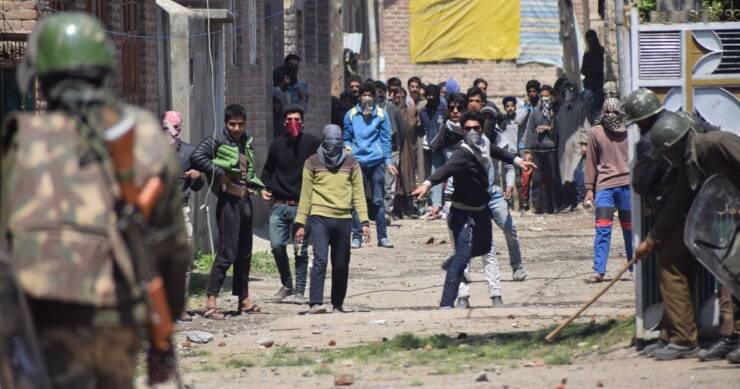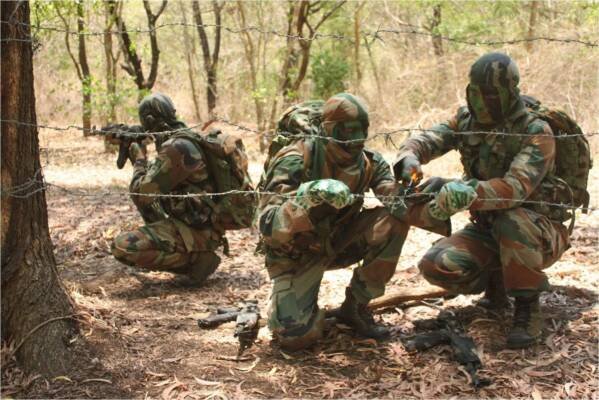
For the past over 60 years, Indian Army has been battling Counter Insurgency and Counter Terrorism in different parts of the country from Jammu and Kashmir to Northeast and has been carrying out operations in accordance with the Special Order of the Day issued by the Chief of the Army Staff (COAS) in 1955 which states: “You are not there to fight the people in the area, but to protect them. You are fighting only those who threaten the people and who are a danger to the lives and properties of the people.”
Unlike the situation encountered on the borders with countries the armed forces carrying out operations internally encounter numerous complexities ranging from gruesome acts of violence carried out by militants and insurgents to unprecedented attacks by some unruly and violent crowd. In such circumstances, the Indian Army is under immense pressure to not only safeguard the territorial integrity of the nation but also to abide by their duty to protect the Human Rights of the innocent civilian population.
Though the Army has been mostly following the twin ethics of ‘minimum use of force’ and ‘good faith’ while conducting such operations, there have been occasions when human rights have been violated and which have invariably been highlighted by various Human Rights bodies and so painting a rather critical portrait of the Army.
It is this kind of image that the Army has been seeking to counter and by and large Indian Army personnel abide by the COAS Ten Commandments for Troops in Counter Insurgency which underscores the need to ‘Respect Human Rights’ and condemns ‘Rape’, ‘Molestation, and ‘Torture.”
The Indian Army set up last year its Human Rights Cell at its headquarters in New Delhi with Major General Gautam Chauhan, an officer of the Gorkha Rifles, taking over as its first head and the Cell aims to examine allegations of human rights violations during the Army’s ongoing counter-insurgency operations in Jammu and Kashmir and parts of the Northeast.
The Cell constituted soon after the Jammu and Kashmir Police submitted a charge-sheet in the July 2020 incident at Shopian when three youth from Rajouri were allegedly abducted and killed in an encounter by the Army. Soon afterwards, the Army had also shown recovery of huge cache of arms and ammunition from the ‘encounter’ site. Captain Bhoopendra Singh of the Indian Army and two civilians have been named in the case by the state police for hatching a conspiracy, kidnapping and killing.
“The Human Rights Cell will put in place a more stringent mechanism to look into human rights violations with greater transparency and probity,” said an officer, who added that the Human Rights Cell would directly report to the Vice Chief of Army Staff (VCOAS).
The actions of soldiers deployed to fight insurgency and terrorism are regulated by three tenets. First, respecting the elders, women and children is of utmost importance. Second, any inconvenience to the public must always be avoided. Finally, since the cordon and search operations might cause inconvenience to the public, these must be conducted only where necessary.
This is not to deny that the Indian Army personnel have never committed any Human Rights violation. Amid the perilous circumstances that prevail in insurgency and terrorism affected areas, cases of soldiers having committed Human Rights violation have come to light. Such cases are, however, addressed in a timely manner by both the military and the civilian judicial systems.
Human Rights are an essential part of the syllabi of the soldiers and the rules of engagement are people-friendly. In a CI/CT environment, soldiers are open to accusations of Human Rights violations, serious as well as frivolous, genuine as well as motivated. But all cases involving accusations against the Indian Army personnel have been legally taken up at the appropriate levels and necessary action has been taken.
Notwithstanding Indian Army’s commitment to protect Human Rights of civilians, different Human Rights Organisations have released numerous reports time and again on the Human Rights Record of the Indian Army.
However, it has been found that many of these reports are false and motivated, and some sections underline only the Human Rights concerns of the local population. What is of great concern is the manner in which these reports conveniently neglect and downgrade the Human Rights challenges encountered by the Indian Security Forces.
Forming the foundation of International Human Rights, the Right to Life has been guaranteed in India by Article 21 of the Indian Constitution. It extends equally to the Armed Forces of the country as much as it applies to the other citizens. Article 33 of the Constitution confers powers on Parliament to modify the rights guaranteed by Part III (Fundamental Rights) while applying to men in the forces including the Army, Navy, Air Force, Paramilitary Forces and Intelligence Services. However, this extends only so far as necessary for maintaining discipline and ensuring proper discharge of duties by the armed forces personnel. In accordance with this, the Army Act 1950, Air Force Act 1950 and the Navy Act 1957 were promulgated. Though these legislations have regulated certain fundamental rights of the Indian Army, but none of the Army Act 1950, Army Rules 1954, Armed Forces Special Powers Act (1958 and 1990), or any other legislation in the country restricts an Indian Army personnel’s right to life and self-preservation as guaranteed under Article 21 of the Indian Constitution.

Even as Human Rights Organisations raise frequently the violation by the armed forces, yet as several officers said that unfortunately, the rights of the Indian Soldiers is a neglected subject of discussion in the country. When Lieutenant Ummer Fayaz, a 22-year-old officer of the Indian Army was home to attend a relative’s wedding in the Shopian district, he was kidnapped, tortured and killed. In 1991, Lieutenant Colonel GS Bali was kidnapped and killed along with his cousin in Badgam where they had gone to attend a funeral. None of the Human Rights Organisations and Activists condemned these attacks on the soldiers.
Again, “Sepoy Rajendra Singh was part of a Quick Reaction Team (QRT) which was providing security to a Border Roads Organisation (BRO) convoy on September 25, 2018. At around 1800 hours, when the convoy was passing through the Anantnag bypass tri-junction near NH-44, few youths hurled stones at the vehicle and Sepoy Rajendra was injured after being hit by a stone directly on the head. The concerned Indian Army jawan later succumbed to his injuries at the hospital.” Cases like these fail to find mention in the reports released by the Human Rights Organisations.
It is indeed important to examine both sides and in this case it imperative to see that when Army personnel are indiscriminately attacked by terrorists, unruly protesters and stone pelters causing casualties among the soldiers, these incidents do not amount to Human Rights violations for the so-called defenders of Human Rights. On the contrary, soldiers are accused of grave Human Rights violations when in such jeopardised environment they are left with no option but to open fire in self-defence. At a public event on September 29, 2019, Union Home Minister rightly said “While 41,800 people have lost their lives in the decades-old militancy in Jammu and Kashmir, but no one has raised the issue of Human Rights violation of Jawans, their widows or the children who were orphaned.”
As a signatory to the Universal Declaration of Human Rights (UDHR), 1948, India accepts that “recognition of the inherent dignity and the equal and inalienable rights to all members of the human family is the foundation of freedom, justice and peace in the world.”
However, it is indeed equally important to ensure that the Human Rights of the Indian soldiers in CI/CT environment is a necessity both with respect to international declarations as well as national legislations. All CI/CT operations are conducted based on three principles- maximum restraint, minimum force and minimum collateral damage. Moreover, there exist strong legal mechanisms in the country that address the allegations of Human Rights abuses by the Armed Forces personnel while on official duties.
However, the country lacks a similar mechanism that protects or deals with cases wherein the Human Rights and Fundamental Rights of an Indian soldier are violated. With a petition filed in the Supreme Court seeking the intervention of the Court to protect the dignity and Human Right of the soldiers facing the stone pelters in Jammu and Kashmir, one can hope that soon with the meaningful intervention of the Apex Court, even the Human Rights of the Indian Soldiers will receive appropriate attention and will no longer be overlooked by certain sections of the society.
-The writer is a senior journalist and media consultant. Views expressed are personal and do not necessarily reflect the views of Raksha Anirveda








